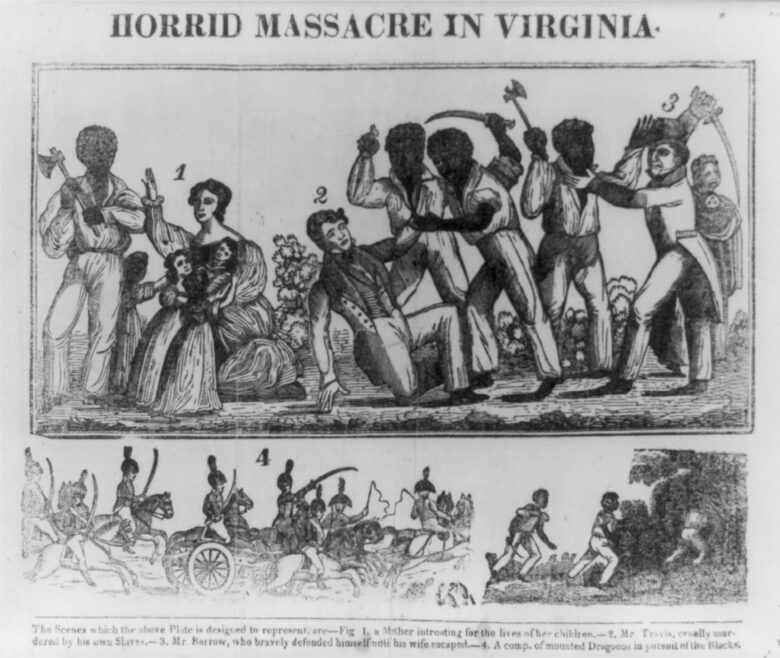August 21 is the anniversary of the start of Nat Turner’s slave rebellion in 1831. This is perhaps the most famous slave rebellion in US history. Although unsuccessful, it sent waves of fear through the US. Even today, the shock of black slaves rising against their masters is present in historical records, as the vast majority emphasise the violence of the uprising.
The reasons for the uprising I believe are quite clear. The plan was to kill white people indiscriminately for a few days, in the hopes of sparking enough fear in the slavers that more black slaves would rally to their cause. After an atmospheric event that caused the sun to change colour, they took it as a sign, and Nat Turner and about 40 other men began the revolution. The first night, they slaughtered the slaver families living at three plantations. But unfortunately, their recruitment efforts were mostly unsuccessful. The next day, news of the revolt had caused the slavers to flee to the woods, and the militia was called in. Due to overwhelming numbers and firepower, the revolt was quickly crushed after killing only a few dozen slavers.
The slavers were indeed shocked by this, and throughout the country, slavers would take out their fears on their own slaves. Hundreds were killed. The surviving slaves from the rebellion were quickly put to death by what the US calls their “justice” system. Nat Turner himself was butchered like an animal, and by some reports, his skin was tanned and used as leather to make handbags and other items.
The legal system was also updated to make education of black people illegal, further restricting the activities that slaves could take part in, and easing the path to re-enslaving black people. The surviving slavers petitioned the government for repayment for the loss of their “property” after the executions. Propaganda was issued to detail the benevolence and “positive good” of slavery.
There were some movements at this time to end slavery. Genocidal US president Andrew Jackson described them as “monsters who should atone with their lives”. The United States still features this man on their $20 bill at the time of this writing.
Media reporting of the incident:

